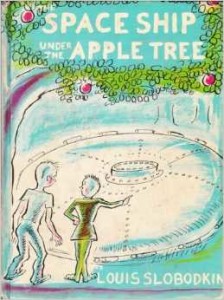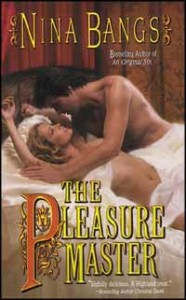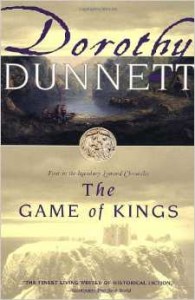A guest post by Guy Anthony De Marco.
 I was a nerdy kid before nerds were identified as a cultural subgroup. I was also a very advanced reader, preferring to enjoy college-level books on astronomy instead of the usual dinosaur or Encyclopedia Brown books in fifth grade.
I was a nerdy kid before nerds were identified as a cultural subgroup. I was also a very advanced reader, preferring to enjoy college-level books on astronomy instead of the usual dinosaur or Encyclopedia Brown books in fifth grade.
One day, while wandering through the local library, I spotted a section called “Science Fiction”. Since it did have the word ‘science’ in the label, I stopped to check out what was lurking on the shelves.
My favorite librarian was re-stocking the shelves with returned books, and she was surprised to see me in the fiction area.
“Run out of astronomy books already, Guy?” she asked with a kindly smile.
I nodded, still perusing the strange titles and authors names.
She dug through her pile and pulled out a well-worn book. “Here, give this one a try. The reading level is below your range, but everyone in middle school seems to enjoy it.”
The book she handed me was “The Space Ship Under the Apple Tree” by Louis Slobodkin. The cover had a crude drawing of a flying saucer with two people in an apple grove.
I read it in the library. Then I checked it out and took it home, where I read it every evening for almost a month, until I had to return it.
This was the book that inspired me to write stories for a living. It combined my favorite topic with novels and fiction, bridging the gap between the two separate areas (brain hemispheres?) of the library.
The second book I decided to read was written by a doctor named Asimov. The cover of Foundation looked interesting enough, and as I was checking it out, my favorite librarian took the time to tell me it was an advanced book with some topics that might be confusing to a young boy.
It took me almost a week to get through the dense book. I enjoyed every word, every unusual combination of phrases that changed their meaning and context. I was fascinated by the language Asimov used.
When I returned that book, I found out there was something in fiction called a series, with books called sequels that continued the story. I picked up the next book in the Foundation line, devoured it, and continued on. I eventually read most of the library’s Asimov titles (the man was quite prolific), and moved to Burroughs, Clark, all the way to Zelazny.
Eventually I read all of the books in the Science Fiction section, so I progressed to Fantasy. Horror wasn’t a separate section at that time, but I did read Frankenstein and Dracula.
As far as that innocuous-looking book by Slobodkin goes, with internal drawings that were on par with what I was sketching at the time, it actually changed my entire reading habits. No, it’s not the best story ever written. No, it’s not in print anymore, despite people actually pleading for it to get put back in libraries. What it did was tell a story to a young kid at the right age, at the right time, and made that kid want to read—and write—fiction. I started writing stories and comics, selling my first story in sixth grade to a friend for a shoebox full of baseball cards (which was the currency of kids in those days.)
I actually tracked down a copy of the first edition of “The Space Ship Under the Apple Tree”. Amazon has used copies available, but the interesting thing about the book’s Amazon page is buried in the (all five-star) reviews. “This was the first science fiction book I ever read” is a common comment. “I re-read this book many times” is another. Some are asking the publisher to get the book back into print and into the libraries so their kids can begin their own reading journeys. Reader T. Rose said, “Slodbodkin’s Marty and Eddie books were pretty much the only reason that kept me in the town’s small library as a kid.”
It turns out I wasn’t as alone and weird as I thought I was.
Reference: “The Space Ship Under the Apple Tree”; Slobodkin, Louis. Macmillan; First Printing edition (1952). ISBN 0027853403. http://www.amazon.com/Space-Ship-Under-Apple-Tree/dp/0027853403/
Guest Writer Bio:
Guy Anthony De Marco is a speculative fiction author; a Graphic Novel Bram Stoker Award®; winner of the HWA Silver Hammer Award; a prolific short story and flash fiction crafter; a novelist; an invisible man with superhero powers; a game writer (Sojourner Tales modules, Interface Zero 2.0 core team, D&D modules); and a coffee addict. One of these is false.
A writer since 1977, Guy is a member of the following organizations: SFWA, WWA, SFPA, IAMTW, ASCAP, RMFW, NCW, HWA. He hopes to collect the rest of the letters of the alphabet one day. Additional information can be found at
Wikipedia,
GuyAndTonya.com, and
GuyAnthonyDeMarco.com.
 Kathy, our modern-day heroine, is overworked, overstressed, and just got out of a bad marriage. When she cried out to the universe that she needs a sunny vacation she didn’t expect the universe to answer by transporting her to the highlands of Scotland…four-hundred and fifty years in the past. Somehow she has to find her way back home and the only help to be had comes from a sexy highlander (the Pleasure Master) and a talking toy robot.
Kathy, our modern-day heroine, is overworked, overstressed, and just got out of a bad marriage. When she cried out to the universe that she needs a sunny vacation she didn’t expect the universe to answer by transporting her to the highlands of Scotland…four-hundred and fifty years in the past. Somehow she has to find her way back home and the only help to be had comes from a sexy highlander (the Pleasure Master) and a talking toy robot.



